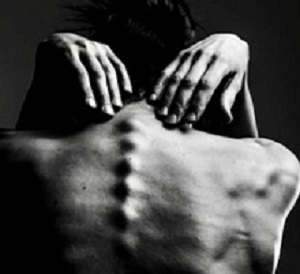 ‘Bonespiration’ — the celebration of skeletal images of bodies featuring protruding bones and pencil-thin limbs — is being promoted on social media, University of Exeter research shows. The study shows how Twitter and Instagram accounts are celebrating extreme thinness, with users invited to say they “like” images.
‘Bonespiration’ — the celebration of skeletal images of bodies featuring protruding bones and pencil-thin limbs — is being promoted on social media, University of Exeter research shows. The study shows how Twitter and Instagram accounts are celebrating extreme thinness, with users invited to say they “like” images.
This so-called “bonespiration” content features selfies by young women of their skeletal bodies featuring protruding collar bones, hip bones and spines in a variety of poses. Its purpose appears to be to boast about a skeletal appearance and inspire others to achieve the same emaciated look.
There are numerous versions of the bonespiration Twitter feed, and Instagram accounts. Some platforms for posting such images are hidden within mainstream sites.
Researchers fear that social media has replaced the pro-anorexia (“pro-ana”) websites, and are becoming an easy to access way of encouraging eating disorders, such as anorexia. Catherine Talbot, a psychologist and PhD researcher at the University of Exeter Medical School and lead author of the paper, said the photos were a form of “social contagion” and inspiring young people to engage with risky practices.
She said the sites are being used to promote extremely unhealthy body types and are increasing pressure on teenage girls to try to become extremely thin, while contributing to a distorted view of their own body.
“Anorexia and extreme weight loss is a serious social and medical problem. To tackle this social contagion we need to be aware of the social media platforms being used by young people – mainly girls and young women – which is encouraging extreme weight loss. This behaviour could seriously damage their psychological and physical health,” Talbot said. “Teenagers need to be taught about positive body image in schools and we need to build resilience.”
The sites flash up a question asking if they need help, but researchers say the platforms raise question about whether tougher regulation is required. They fear efforts to ban the images would lead to others with different hashtags appearing within days.
More mainstream Twitter accounts such as ‘thinspiration’, which features photos of thin celebrities, also depict young people with protruding ribs collar bones and spines, the research found. The research found a small sub group of people posting skeletal images with the hashtag "fitspiration", which is dedicated to inspiring supposedly healthy bodies.
The research, led by a psychologist at the University of Exeter’s Medical School, shows there are thousands of account holders. The images of protruding bones are mainly posted by young women.
The study analysed 730 images posted. It found 26% of images showed hip bones, 23% showed jutting ribs, and 22% showed protruding collarbones – 6% of photographs analysed depicted the spine.
The researchers say the sites are being used to promote extremely unhealthy body types and are increasing pressure on teenage girls to try to become extremely thin, while contributing to a distorted view of their own body.
Abstract summary
Thinspiration refers to imagery commonly shared on social media that encourages a user to be thin. Likewise, fitspiration and bonespiration are imagery that inspire a user to be fit and extremely thin, respectively. There has been limited research that has analysed and compared the physical attributes of thinspiration and fitspiration content, and no research has analysed bonespiration. This study aimed to (i) examine the features of bonespiration content in relation to thinspiration and fitspiration; and (ii) explore how fitspiration compared to thinspiration and bonespiration.
The researchers conducted a content analysis on 734 images with hashtags thinspiration, fitspiration, and bonespiration, shared on the social media platforms Twitter, Instagram, and WeHeartit. Similarities were generally observed between thinspiration and bonespiration; however, bonespiration content contained fewer muscles and more bone protrusions, indicating that bonespiration may represent an exaggerated form of thinspiration. Thinspiration and bonespiration contained more thin, objectified bodies when compared to fitspiration, which contained more muscles and muscular bodies. This indicates that fitspiration may represent a less unhealthy form of content when compared to thinspiration and bonespiration. Fitspiration should still be approached with caution, however, as a small group of fitspiration content was identified that was similar to thinspiration with regards to the presence of extremely thin bodies.
Authors
Catherine Victoria Talbot, Jeffrey Gavin, Tommy van Steen, Yvette Morey
[link url="http://www.exeter.ac.uk/news/featurednews/title_615327_en.html"]University of Exeter material[/link]
[link url="https://jeatdisord.biomedcentral.com/articles/10.1186/s40337-017-0170-2"]Journal of Eating Disorders abstract[/link]
